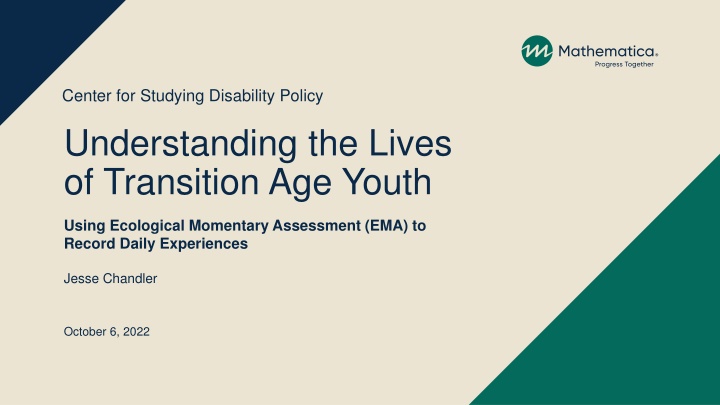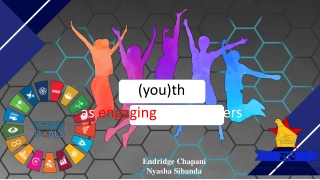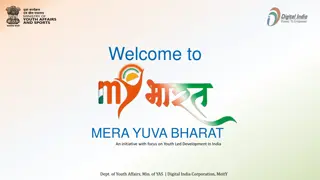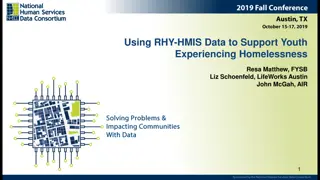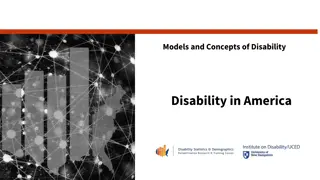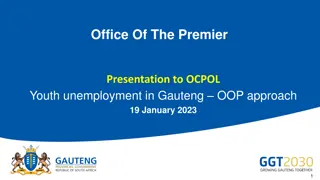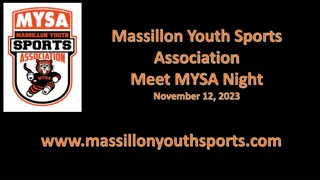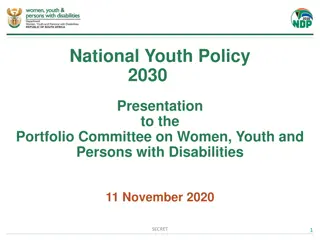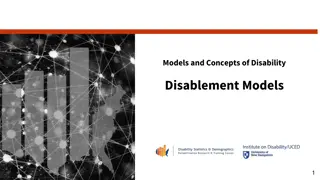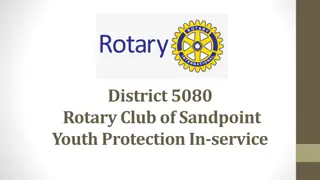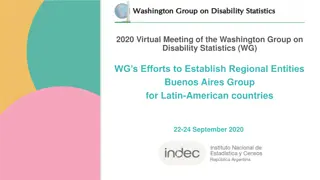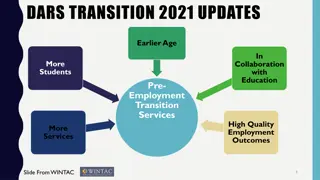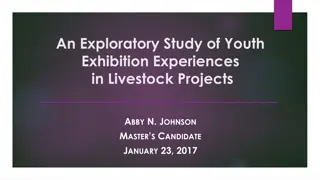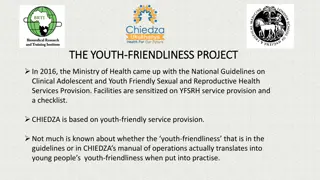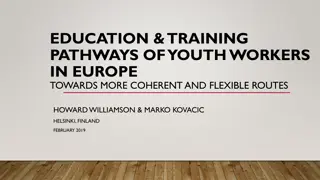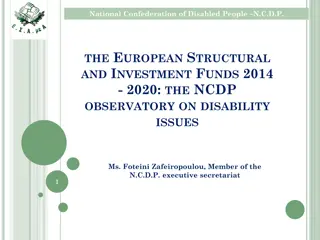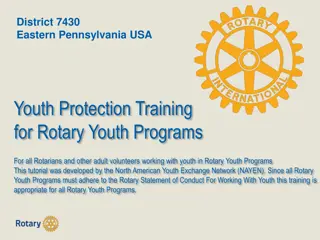Studying Disability Policy: Transition Age Youth Experiences
Youth, especially those with disabilities, face significant challenges that impact their future outcomes. This research project utilizes Ecological Momentary Assessment (EMA) to gather daily experiences of transition age youth. By capturing real-time data, the study aims to provide insights into the lives of these individuals and understand the various factors influencing their well-being and success.
Download Presentation

Please find below an Image/Link to download the presentation.
The content on the website is provided AS IS for your information and personal use only. It may not be sold, licensed, or shared on other websites without obtaining consent from the author.If you encounter any issues during the download, it is possible that the publisher has removed the file from their server.
You are allowed to download the files provided on this website for personal or commercial use, subject to the condition that they are used lawfully. All files are the property of their respective owners.
The content on the website is provided AS IS for your information and personal use only. It may not be sold, licensed, or shared on other websites without obtaining consent from the author.
E N D
Presentation Transcript
Center for Studying Disability Policy Understanding the Lives of Transition Age Youth Using Ecological Momentary Assessment (EMA) to Record Daily Experiences Jesse Chandler October 6, 2022
Why understand youths lives? Growing up is hard - More responsibility and less support Youth with disabilities face unique challenges and often face poorer outcomes as adults - Higher incidence of poverty - More likely to be involved in the justice system - Less community participation/inclusion - Lower subjective well-being Big outcomes are the product of many small events Center for Studying Disability Policy 2
Surveys rely on (fallible) memory Memories are constructed on the fly We remember some details and forget others Draw on other information to fill in the gaps - Similar experiences - Beliefs about how the world usually works - Anything else that is on our mind when we answer the question Memories feel real but are often suspect Center for Studying Disability Policy 3
EMA as a way of understanding experiences EMA sends many brief surveys over a set period (usually a few weeks) Ecological in the sense that it asks people to provide data about their daily activities Momentary in that the data collected is about the participants current or recent experiences Center for Studying Disability Policy 4
Study participants Transition age youth in MD - High school seniors in 2019 or 2020 - Had either an IEP or 504 plan while enrolled in high school o Mostly ADHD and ASD - Received services through DORS Prior participants in the Way2Work Maryland demonstration Recruited 54 participants through a low-intensity process (called and emailed three times) Center for Studying Disability Policy 5
Method Consent Demographics and biographical information Way2Work Maryland Evaluation (2020) Permission to send text messages Additional demographics and biographical information Baseline Survey (March 2021) 105 surveys sent by text message Five times per day for three weeks Sent at predetermined times between 9am and 8pm each day Participants could also complete the most recent previously sent survey (if not yet completed) EMA surveys (April 2021) Center for Studying Disability Policy 6
EMA survey instrument Where are you? Who are you with? What are you doing? How do you feel? Did you encounter any barriers caused by your disability? If so, did you use any support? (advice from others, help from others, special equipment, or something else) Center for Studying Disability Policy 7
Response rates were good (but variable) Completed about 2/3rds of surveys Responses declined over time Response rates lower in the mornings 15% 10% 5% 0% -5% -10% -15% 9 10 a.m. 11 a.m. 12 p.m. 1 2 3 4 5 6 7 8 a.m. p.m. p.m. p.m. p.m. p.m. p.m. p.m. p.m. Center for Studying Disability Policy
Some activities are more pleasant than others 4.3 4.2 4.1 4 Mood 3.9 3.8 3.7 3.6 TV/media Eating Education Household activities At work "Somewhere else" Friends Coworkers Center for Studying Disability Policy 9 9
When do youth encounter barriers? 15% 10% 5% 0% Overall TV Travelling Leisure Eating and Education Work Household Activities Personal Care Other drinking Center for Studying Disability Policy 10
How do youth overcome barriers? Used at least one strategy Advice Help from others Assistive technology Something else 0% 10% 20% 30% 40% 50% 60% 70% 80% Center for Studying Disability Policy 11
Help from others makes barriers feel less bad 0.5 0.4 0.3 0.2 0.1 Mood 0 -0.1 -0.2 -0.3 -0.4 -0.5 No barrier Barrier / no strategies used Advice Help from others Assistive technology Other Center for Studying Disability Policy 12
Takeaways and next steps Barriers frequently encountered in education, less so in work Youth often use strategies to overcome barriers - What other strategies do youth use? Presented a group-level description, but EMA data allows for analysis of patterns across situations within individuals - Can track how specific individuals are doing and tailor services appropriately Center for Studying Disability Policy 13
Funding for this study was provided by the Research and Training Center on Disability Statistics and Demographics at the University of New Hampshire, which is funded by the National Institute for Disability, Independent Living, and Rehabilitation Research in the Administration for Community Living at the U.S. Department of Health and Human Services (DHHS) under cooperative agreement 9ORTGE0001. The contents do not necessarily represent the policy of DHHS, and the reader should not assume endorsement by the federal government (EDGAR, 75.620 (b)). Center for Studying Disability Policy 14
For more information Jesse Chandler JChandler@Mathematica-mpr.com Center for Studying Disability Policy 15
